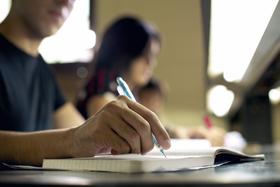Top Rankings
Ringwood School District ranks among the top 20% of public school district in New Jersey for:
Category
Attribute
Student Attention
Lowest student-teacher ratio (Top 1%)
For the 2025-26 school year, there are 4 public elementary schools serving 1,003 students in Ringwood School District. This district's average elementary testing ranking is 6/10, which is in the top 50% of public elementary schools in New Jersey.
Public Elementary Schools in Ringwood School District have an average math proficiency score of 47% (versus the New Jersey public elementary school average of 39%), and reading proficiency score of 49% (versus the 49% statewide average).
Minority enrollment is 24% of the student body (majority Hispanic), which is less than the New Jersey public elementary school average of 63% (majority Hispanic).
Overview
This School District
This State (NJ)
# Schools
4 Schools
1,929 Schools
# Students
1,003 Students
886,285 Students
# Teachers
114 Teachers
77,833 Teachers
Student-Teacher Ratio
9:1
9:1
Student By Grade
District Rank
Ringwood School District, which is ranked within the top 50% of all 645 school districts in New Jersey (based off of combined math and reading proficiency testing data) for the 2022-2023 school year.
Overall District Rank
#290 out of 648 school districts
(Top 50%)
(Top 50%)
Math Test Scores (% Proficient)
47%
38%
Reading/Language Arts Test Scores (% Proficient)
49%
49%
Science Test Scores (% Proficient)
19%
23%
Students by Ethnicity:
Diversity Score
0.40
0.72
% American Indian
1%
n/a
% Asian
1%
10%
% Hispanic
16%
34%
% Black
2%
15%
% White
76%
37%
% Hawaiian
n/a
n/a
% Two or more races
4%
4%
All Ethnic Groups
District Revenue and Spending
The revenue/student of $30,442 is higher than the state median of $26,940. The school district revenue/student has stayed relatively flat over four school years.
The school district's spending/student of $27,907 is higher than the state median of $25,837. The school district spending/student has stayed relatively flat over four school years.
Total Revenue
$31 MM
$36,642 MM
Spending
$28 MM
$35,142 MM
Revenue / Student
$30,442
$26,940
Spending / Student
$27,907
$25,837
Best Ringwood School District Public Elementary Schools (2025-26)
School
(Math and Reading Proficiency)
(Math and Reading Proficiency)
Location
Quick Facts
Rank: #11.
Peter Cooper School
(Math: 60-69% | Reading: 45-49%)
Rank:
Rank:
7/
Top 50%10
54 Roger Court
Ringwood, NJ 07456
(973) 835-5844
Ringwood, NJ 07456
(973) 835-5844
Gr: K-3 | 234 students Student-teacher ratio: 9:1 Minority enrollment: 27%
Rank: #22.
Eleanor G. Hewitt
(Math: 50% | Reading: 50%)
Rank:
Rank:
6/
Top 50%10
266 Sloatsburg Road
Ringwood, NJ 07456
(973) 962-7015
Ringwood, NJ 07456
(973) 962-7015
Gr: 4-5 | 228 students Student-teacher ratio: 8:1 Minority enrollment: 32%
Rank: #33.
Martin J. Ryerson School
(Math: 42% | Reading: 51%)
Rank:
Rank:
6/
Top 50%10
130 Valley Road
Ringwood, NJ 07456
(973) 962-7063
Ringwood, NJ 07456
(973) 962-7063
Gr: 6-8 | 370 students Student-teacher ratio: 9:1 Minority enrollment: 19%
Rank: #44.
Robert Erskine School
(Math: 50-59% | Reading: 30-39%)
Rank:
Rank:
5/
Bottom 50%10
88 Erskine Road
Ringwood, NJ 07456
(973) 962-7026
Ringwood, NJ 07456
(973) 962-7026
Gr: K-3 | 171 students Student-teacher ratio: 9:1 Minority enrollment: 19%
Recent Articles

Public School Open House & Enrollment Season Guide
A parent-focused guide to the public school open house and enrollment season, with expert questions, timelines, and decision tips.

School Supply Budget 2026: Fees, Books, Tech Costs
School Supply Budget 2026 guide for parents, covering fees, textbooks, technology, and hidden extras to plan ahead.

Education Funding in America (2025 Update)
Comprehensive 2025 update on public school funding in America, new federal and state policies, per-pupil spending, and equity challenges.





